Art and DT
Creativity plays an important part in the education of Summer Fields pupils. With dedicated spaces for art, ceramics, a technology workshop and computer design facilities, the boys' imagination is their only limitation.
ART
We wish to inspire pupils by developing their knowledge, skills and understanding through investigating, making and evaluating art, craft and design. Pupils are encouraged to view themselves as artists.
EDDIE ORR, HEAD OF ART
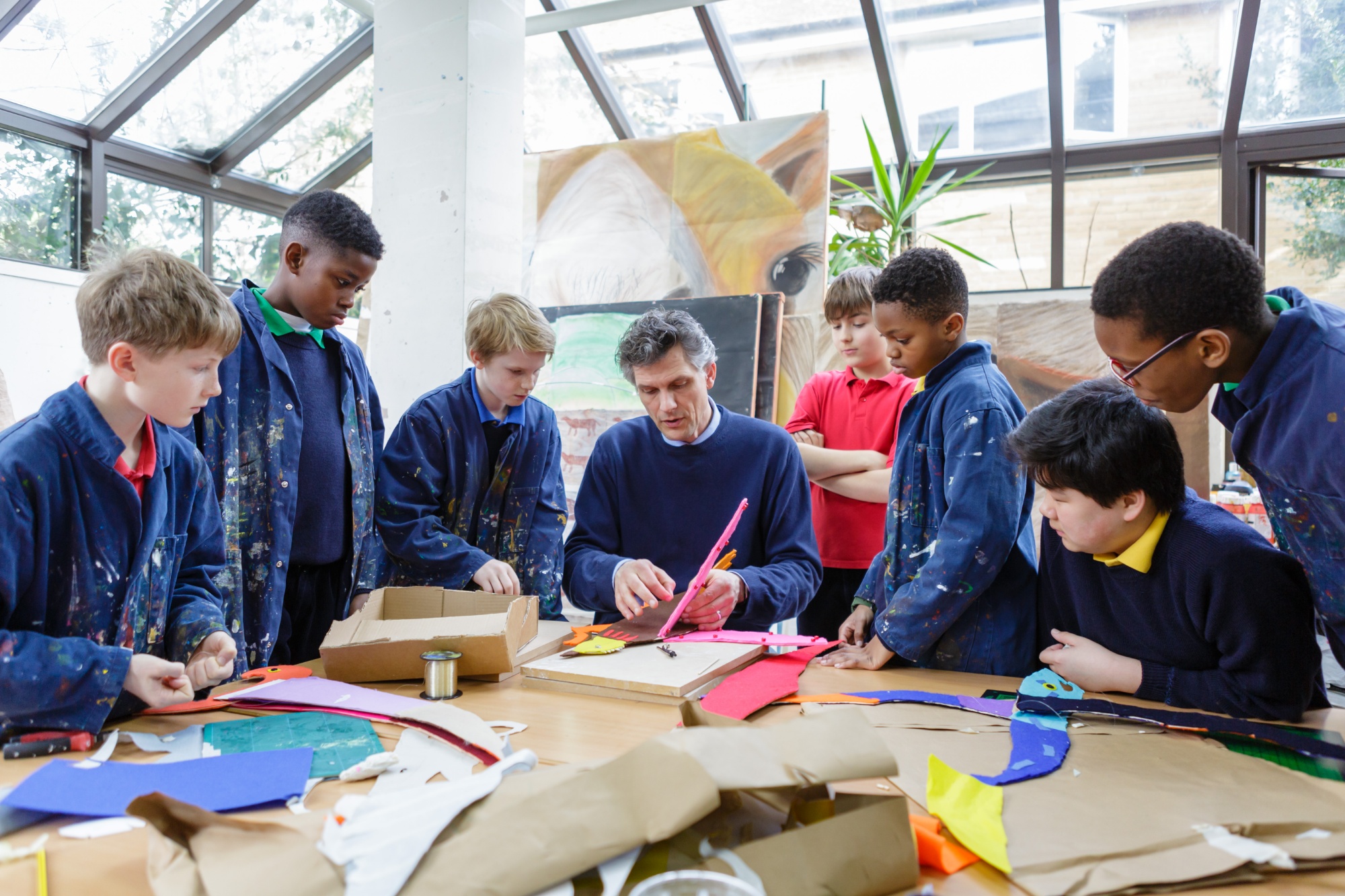
The aim of the Art department at Summer Fields is to leave in each boy, a positive and lasting experience of the world of art and design, providing a glimpse of life from an artist’s perspective, introducing them to many of the tools and traditional processes at the artist’s disposal and enabling them to create personal art and design work of their own. They are encouraged to view their creative efforts as valuable and their mistakes as part of the learning process, and whatever their technical ability, we strive to see each one leave Summer Fields with a confident competence; to be able to communicate their ideas independently, with some clarity and realism, utilising a maturing understanding of the formal elements of art.


Annually, the boys will have the exciting opportunity to work with a professional artist through the Artist in Residence programme.
They will take part in gallery visits to see first-hand, fine and digital art, sculpture, ceramics, photography and film.
Each project undertaken is given an historical / contemporary context. Therefore, they will have some grasp of the role of the artist, the importance of art and design in today’s world and an empathy and respect for a wide variety of cultural perspectives.
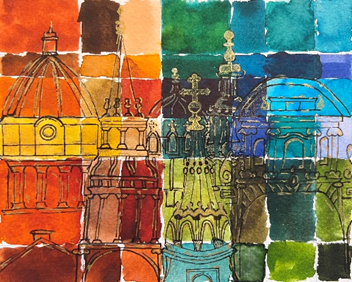
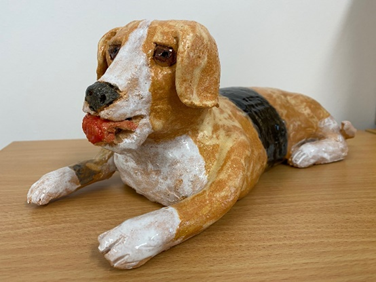
The department enters boys’ work for occasional public competitions. Regular entries are made to Young Art Oxford and The Royal Academy’s Young Artist’s Summer Show. Recently we have entered artwork for The Week Junior Christmas Cover Competition and Blackwell’s Bookshop Typography Exhibition.
Pupils who show a particular talent for art, have the opportunity to extend their time in the art room as part of the Portfolio Group. Some of these boys will go on to attempt scholarships to their future schools.

The art department is a big hitter, with drawing, painting, ceramics, sculpture, printmaking and textiles all taught and visits to museums and galleries both varied and numerous.…the combination of imagination, outstanding teaching and some very cool kit is exactly what you need to inspire the engineers and inventors of the future.
Talk Education 2023
DESIGN TECHNOLOGY (dt)
Design and Technology is a subject of profound inspiration, marked by its rigorous, practical and inherently valuable nature. It enables boys to actively engage in the creation and production of solutions for real and pertinent challenges across diverse contexts. This subject integrates seamlessly with other academic areas such as Mathematics, Science, Computing, Art, and Engineering. Through this interdisciplinary approach, it instils in students the ability to take calculated risks, foster innovation and cultivate an enterprising and capable mindset.
The curriculum imparts a critical understanding of the pervasive influence of Design and Technology on both everyday life and the broader global landscape. It serves as a conduit for the development of boys' discerning faculties, encouraging them to apply value judgments encompassing aesthetic, economic, moral, social, and technical dimensions. This not only enhances their proficiency in personal design endeavours but also equips them with the capacity to evaluate the work of their peers and predecessors with a nuanced perspective.
Design & Technology is taught to all pupils in Years 4, 5, 6, 7 and 8 per week during a 1 hour and 10 minute lesson.
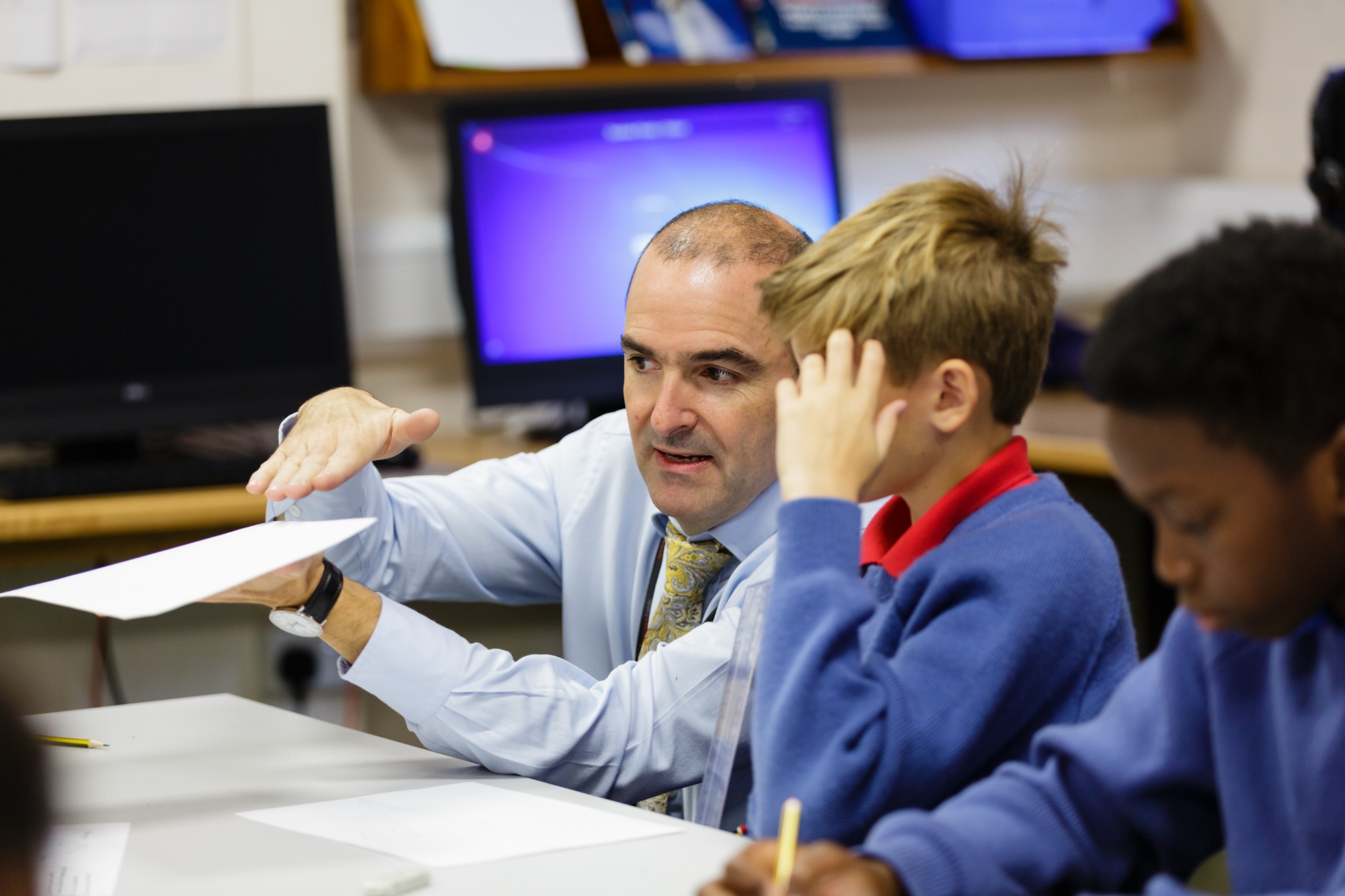
Creativity and innovation: Through hands-on projects, pupils learn to generate and develop ideas, explore different design possibilities, and think creatively to come up with innovative solutions to real-world problems.
Problem-solving skills: D&T pupils learn how to identify and analyse problems, break them down into manageable components, and devise effective solutions.
Practical application of knowledge: D&T activities enable students to apply theoretical knowledge from various subjects, such as mathematics, science, and engineering, to practical scenarios. This integration helps them understand the relevance and real-world applications of the concepts they learn in other disciplines.
Collaboration and communication: D&T projects often involve teamwork, allowing students to develop effective communication and collaboration skills. They learn how to work in groups, share ideas, delegate tasks, and resolve conflicts, fostering important interpersonal skills necessary for future professional environments.
Hands-on skills development: such as using tools, working with materials, prototyping, and construction techniques. These skills include craftsmanship, precision, attention to detail, and the ability to transform ideas into tangible products.
The value of iterative design process: which involves designing, testing, evaluating, and refining their creations. They understand the importance of feedback, iteration, and continuous improvement, fostering a growth mindset and resilience in the face of challenges.
Aesthetic awareness and design principles: exposing students to the principles of aesthetics and design, teaching them to appreciate and evaluate the visual aspects of products, structures, and systems. They learn about factors like proportion, balance, colour, and functionality, which contribute to effective design.
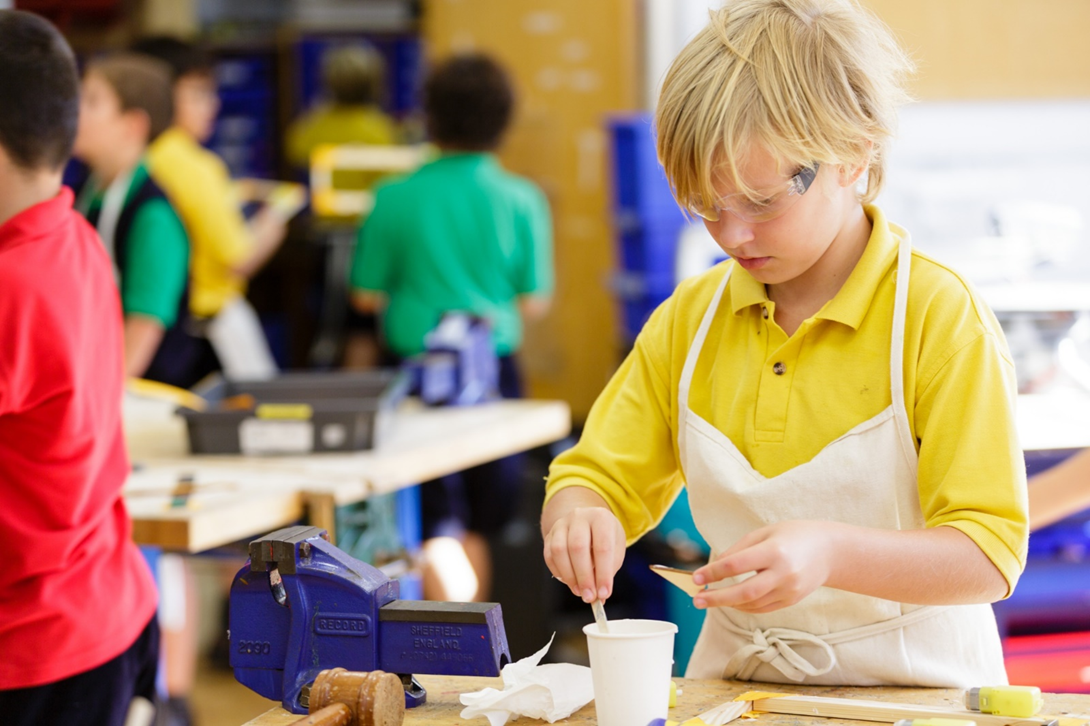
The department also runs D&T clubs during the boy’s activities slot at the end of each day. Some of these are permanent fixtures such as the junior and senior electric motor racing club, others change regularly and have included a Japanese Manga drawing activity, Lego construction, wood carving, sewing skills and teddy bear construction and mechanical toy making.
The D&T workshop contains hand tools, workbenches and a range of equipment including:
- Desktop computers and twenty department laptops for Computer Aided Design projects using 2D and 3D design software.
- A Roland Camm-1 Plotter / Cutter for vinyl cutting.
- Five 3D printers.
- An A2 laser cutter.
- A vacuum former for moulding plastic.
- Strip heaters / line benders
- A pillar drill
- A pedestal sander
- A bandsaw for staff to use to support the pupils projects and designs
The department enters competitions where these are available and suitable for the age of the boys. A junior Goblin (Year 6) and a senior F24 team (Year 7 and 8) take part in an annual motor racing competition where they build and develop an electric racing car.
